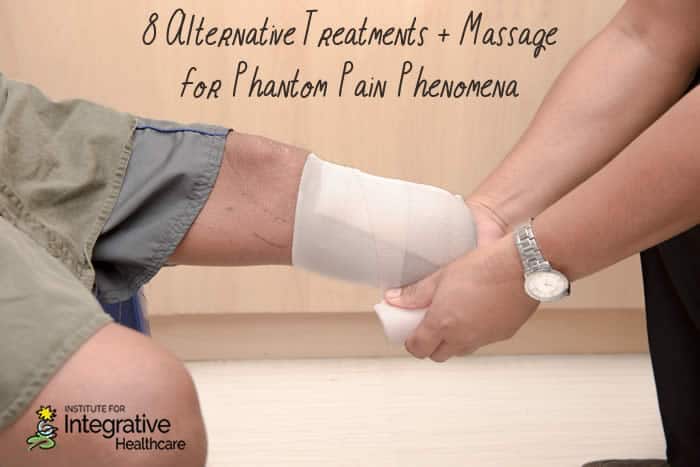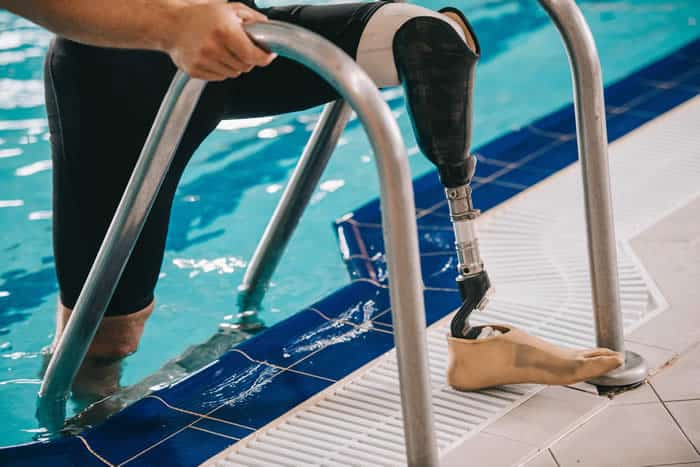

According to the Mayo Clinic, phantom pain is pain experienced from a body part that is no longer present. (1) The nature of the pain can vary in intensity, frequency and duration. Patients have described the pain as shooting, stabbing, cramping, pins and needles, crushing, throbbing and/or burning.
Some patients have reported non-painful, yet abnormal sensations such as tingling, numbness and heavy pressure felt where the limb formally was located. These patients are said to have Phantom Limb Syndrome. Similar nervous system mechanisms are at play with both Phantom Pain and Phantom Limb Syndromes.
Interpreted Pain
Signals pertaining to pain travel from peripheral nerves through the spinothalamic spinal tract towards the thalamus portion of the brain. From the thalamus, these sensory signals are integrated with primary somatosensory cortex regions within the grey cerebral matter. How these are interpreted as pain depends upon many factors, notably Brodmann’s brain area #10 which is a significant brain portion within the frontal lobe aiding to help someone understand the nature of their pain. (2)
Doctors used to consider phantom pain and related sensations a psychogenic phenomenon. Upon examining imaging scans such as positron emission tomography (PET) or magnetic resonance imaging (MRI), neurological activity within the central nervous system pertaining to amputated regions displays positively.
Reasons for Amputation
There are two types of amputations described in medical literature.
- Traumatic amputation results in a limb or body part cut or torn off the body due to a serious accident to the body.
- Surgical amputation results in a limb or body part being removed surgically. Surgical amputations are categorized as types of upper limb or lower limb procedures. Double amputation involves the removal of limbs or body parts upon both sides of the body.
Cancer and severe infection can be potential causes for the need to amputate a limb or body part if tissue has been damaged beyond reasonable repair. Sarcomas, cancers that affect parenchymal organ tissue, can become so large and aggressive, making amputation the only viable option to save the patient.
Bacteria related to the Meningococcal genus as well as Methicillin-Resistant Staphylococcus Aureas (MRSA) can decay organ tissue to the point amputation is necessary.
Children born without a limb or body part are said to have a congenital amputation. These children may be fitted with artificial limbs if deemed appropriate by their healthcare team.
According to Johns Hopkins, the majority of surgical amputations result from complications of vascular disease and similar conditions such as Diabetes Mellitus and Peripheral Arterial Disease. Chronic vascular problems undermine the body’s arterial and capillary delivery network depriving distal tissues of blood, resulting in tissue degeneration within the extremities. (3)
- Amputation procedures will alter nerves within the surgically managed region.
- With any surgical procedure, the development of scar tissue and potential for thrombi formation will be two important considerations.
- Peripheral neuropathy may also develop as nerves can be cut and cauterized during surgery.
A massage therapist needs to assess the extent of the three occurrences above, with an amputee patient.
Recovery
Physically, a regimented plan of wound care and compressive bandaging including the usage of shrinker socks are intended to ensure hygienic care of the affected region and prevent swelling.
This care may prepare a patient for a use of a prosthetic device, an artificial body part to be attached to the body. Prosthetic devices are included within prosthesis care. (4)

There is an increased risk of falling after amputation procedures. The mind and body need time to adjust to its new proportions and limbs, which can be easily forgotten upon getting out of bed. Placing a walker, handrail or wheelchair next to the bed can remind a patient to be careful upon standing and walking. Physical therapy can be employed to strengthen muscles to prevent falls.
Managing Pain
Increasing pain levels can be a concern for amputation patients. If pain levels are difficult to manage with medications and other traditional means, a peripheral nerve block may be employed.
Common medications used to manage pain include:
- Non-Steroidal Anti-inflammatory (NSAID) drugs
- Opioids
- Antidepressants
- Anticonvulsants
- Beta-Blockers
- Muscle relaxants
9 Treatments for Phantom Pain Syndrome
Having a limb removed can be emotionally distressing. Alternative and complimentary practices can be helpful in easing the emotional distress experienced by a patient.
Some of these practices include (5):
- Acupuncture to restore energetic harmony amongst the body’s neural-fascial network.
- Shrinkers are prosthetics used to control local swelling of a recently amputated area. There are varieties designed for application both above and below the knees.
- Massage to calm the central nervous system and address muscles affected by the amputation procedure.
- Repositioning when sleeping and resting with the usage of bolsters, pillows and blankets for comfort will help ease pain sensations.
- Mirror box therapy, developed by Vilayanur Ramachandran, allows a patient to visually see themselves with both limbs to ease pain sensations using a box with two mirrors in the center.
- Biofeedback can ease pain between 20-30% with clients with phantom pain syndrome. (6)
- TENS (Transcutaneous electrical nerve stimulation) can ease pain significantly after 60 minutes of treatment with clients with phantom pain syndrome. (7)
- Virtual reality therapy can ease pain significantly with phantom pain syndrome patients, according to a 2018 study published by ClinicalTrials.gov. (8)
- Guided imagery along with exercises and progressive muscle relaxation can ease pain significantly with clients with phantom pain syndrome. (9)
Conclusion
With a myriad of treatment options, the phenomena of phantom limb sensations and accompanying phantom limb pain can be addressed thoroughly.
Massage therapy may fit into the overall treatment plan of a patient. Calming the central nervous system and addressing muscles and regions affected by amputation procedures will be the top courses of actions for a massage therapist to consider.











